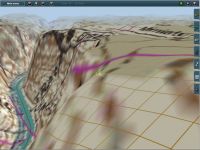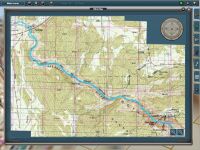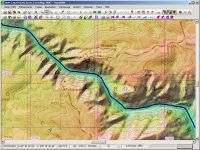When lowering the elevation in TransDem, does it lower the entire elevation; IE 1500m to 2500m becomes 1400m to 2400m, Or does it compress it such as 1500m to 2500m becomes 1500m to say 2200m?
Hi Merrill,
From when I did it, it lowered the whole map by what ever I needed it to be. In my case I had to lower it 1500 meter so I put in that I need it -1500 meter lower and it chopped of 1500 meter.
Making my top of 4500 meter become 3000 meter and my low of what ever it was - for instance 1800 meter to become 300 meter.
Annoying as it is in Trainz to remember to always remove 1500 meter from every know heights, it is far better then to try inside of Trainz to work over 3000 meter as while HOG and TransDEM can create the ground over 3000 meter and at least versions before the newer Trainz allowed me to work above 3000 meter with tracks and structures and all - I was never allowed to do any ground work, as the ground grid would always drop down to 3000 meter as soon as I tried to do anything to it...
And Auran stand was, "we allow a range from -3000 meter to 3000 meter, that is a total range of 6000 meter, you have no need for such a large raise anywhere, as you can always start at a sea level at -3000 meter"...
Not quoted word by word, but that was the meaning I got out of them...

Anyway, the only thing I remember when lowering my old map years back was that all objects was initially hanging in the air, but as soon as I touch them, they drop down to the ground.
Same thing you see in Trainz if you place a object (not a spline) and then you lower the ground - sometimes the object stay put.
At least it has happen to me many times.

So, yes, TransDEM lower the whole elevation, not compresses it.

Love your projects, I have the area Canon City in southwest, Florence in south east and hopefully down to some of the coal mines south of Florence, then up to Cripple Creek and further north to Woodland Park in North and all the way East to Colorado Springs as one huge map in Trainz...
One map I need to redo as the Cripple Creek area it self has a big problem with the ground and the topomap not lining up while area around seems to do it.
Spent years on an of on that project, so good luck with yours, your of to a flying start, well done!!
Linda



